Disclosure: This article contains affiliate links. We may earn a commission from purchases at no extra cost to you, which helps our travel content.
There's something about Dublin that reminds me of vinyl records – both have layers of history that reveal themselves gradually, both reward those willing to dig deeper, and neither requires a fortune to enjoy properly. After my third visit to Ireland's capital last fall (a strategic stopover before heading to Leopardstown Racecourse), I've refined my approach to experiencing this literary and musical mecca without decimating my bank account. As someone who meticulously analyzes patent claims by day, I apply the same detailed scrutiny to maximizing value in my travels. Dublin may have a reputation for being expensive, but with strategic planning and local insights, you can experience its rich culture, vibrant atmosphere, and historical significance without the financial hangover that typically follows a night at Temple Bar.
Free Cultural Immersion: Museums & Galleries
Dublin houses some of Europe's most impressive collections, and the best part? Many won't cost you a single euro. The National Museum of Ireland actually comprises four museums, with three located in Dublin proper. My personal favorite is the Archaeology branch on Kildare Street, where you can marvel at prehistoric Irish gold and perfectly preserved bog bodies (a macabre yet fascinating glimpse into Iron Age Ireland). The Natural History Museum (affectionately dubbed the 'Dead Zoo' by locals) offers Victorian-era cabinets filled with taxidermy specimens – quirky and educational in equal measure.
The National Gallery of Ireland showcases an impressive collection spanning the 14th to 20th centuries. I spent nearly three hours examining their Caravaggio (The Taking of Christ) and the detailed Irish landscapes that gave me context for the countryside I'd be seeing at the races later that weekend. The Hugh Lane Gallery houses Francis Bacon's reconstructed studio – a chaotic testament to creative genius that makes my own cluttered desk look positively minimalist by comparison.
The Irish Museum of Modern Art (IMMA) occupies the stunning 17th-century Royal Hospital Kilmainham. Even if contemporary art isn't your thing, the formal gardens and grounds are worth the visit. I found myself sketching the geometric patterns of the gardens while listening to some newly-purchased Irish folk records on my portable headphones – a perfect afternoon of cultural absorption.
While the Book of Kells at Trinity College Library is magnificent, its €14 entry fee places it outside the 'free' category. However, I'd argue it's worth the splurge if you're a bibliophile or history enthusiast.
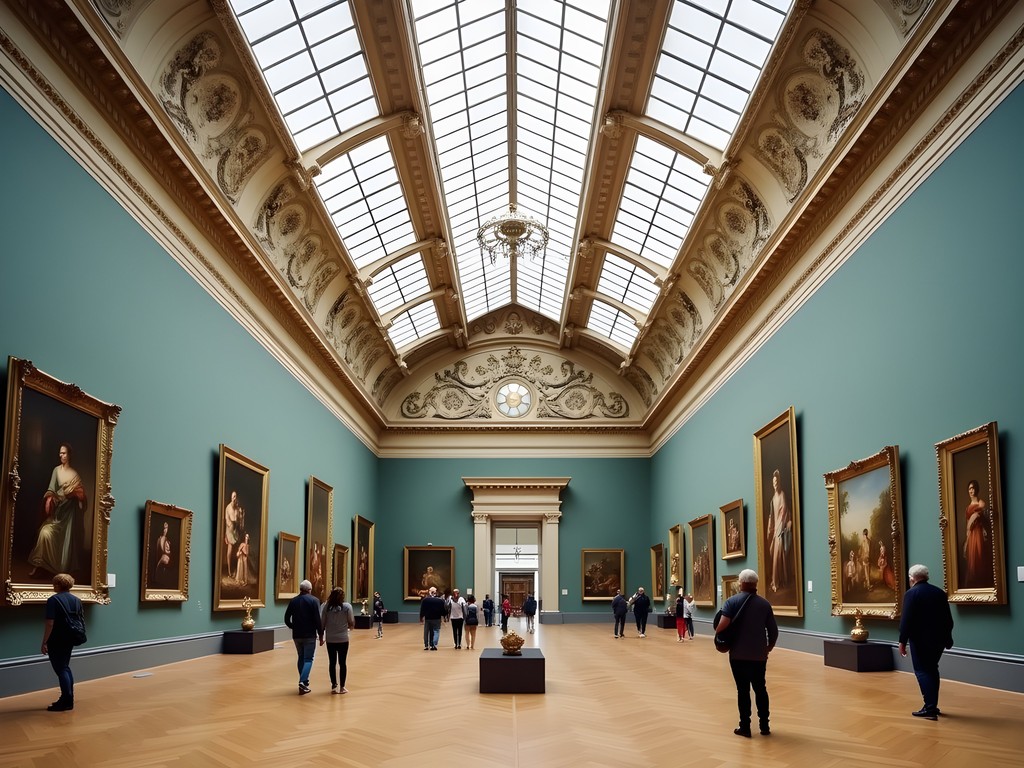
💡 Pro Tips
- Visit the National Gallery on Thursdays for late opening hours until 8:30pm – fewer crowds and beautiful evening light
- Download free audio guides before visiting museums to enhance your experience without paying for guided tours
- The Chester Beatty Library behind Dublin Castle has one of the finest collections of manuscripts and books in Europe – completely free and often overlooked
Parks, Walks & Public Spaces: Urban Oases
Dublin's green spaces offer respite from both urban bustle and budget concerns. St. Stephen's Green sits at the heart of the city, providing 22 acres of Victorian landscaped gardens. During my last visit, I packed a simple picnic (picked up from Dunnes Stores for under €10) and spent a leisurely afternoon people-watching and reading about Irish thoroughbreds in preparation for my weekend at the races.
Phoenix Park deserves special mention – at 1,750 acres, it's one of Europe's largest enclosed urban parks and home to a herd of wild fallow deer. I rented a bike for €5 from the entrance and spent a blissful morning cycling past the Wellington Monument, the President's residence (Áras an Uachtaráin), and the Victorian People's Flower Gardens. The park houses Dublin Zoo as well, though that carries an admission fee.
For literary enthusiasts like myself, a self-guided walking tour of Dublin's writer haunts costs nothing but shoe leather. I created my own route connecting locations from James Joyce's Ulysses, stopping at Sweny's Pharmacy (where Leopold Bloom bought lemon soap) and finding it virtually unchanged since Joyce's time. They host free daily readings, though I did purchase a second-hand copy of Dubliners for €5 as my contribution.
Merrion Square offers another delightful green space, bordered by magnificent Georgian buildings and featuring a playful Oscar Wilde statue lounging on a rock. I spent an hour here with my travel journal jotting down observations and sketching the colorful doors of the surrounding townhouses – a quintessentially Dublin visual that costs nothing to appreciate.
The Grand Canal provides a peaceful walking path away from tourist crowds. On Sunday morning, I joined locals walking along the tree-lined banks, watching swans and discovering small cafes where coffee costs half what you'd pay in Temple Bar.
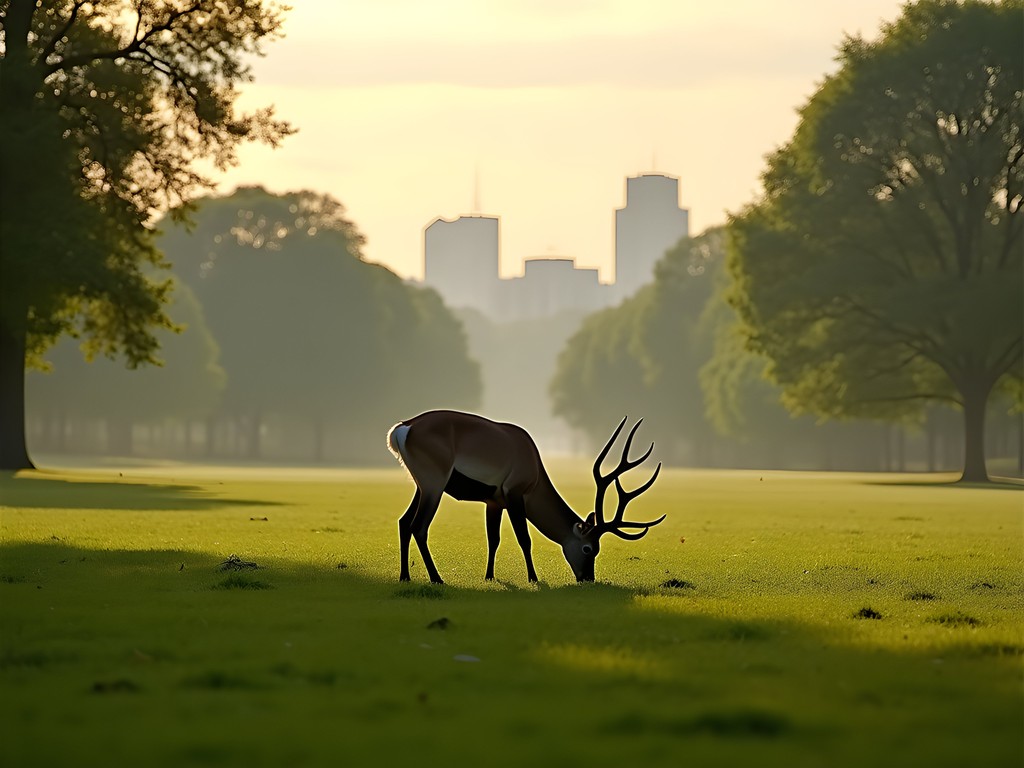
💡 Pro Tips
- Visit Phoenix Park early morning or near sunset for the best chance of seeing the deer herds active
- Download the free Dublin Literary Walking Tour map from the Dublin City Council website
- Bring a reusable water bottle – Dublin's tap water is excellent and there are filling stations throughout the city
Historical Dublin: Time Travel on a Budget
Dublin Castle operates on a dual system that budget travelers should exploit: while full access requires a paid guided tour, you can explore the grounds, gardens, and certain areas like the Chapel Royal completely free of charge. I spent a fascinating hour examining the architecture that spans 800 years of Irish history without spending a cent.
Dublin's churches offer architectural splendor and historical significance without admission fees (though donations are appreciated). St. Patrick's Cathedral charges for entry, but Christ Church Cathedral allows free entry during services – I attended evensong and experienced the magnificent acoustics with a world-class choir performing. St. Audoen's Church on High Street is completely free and houses the only remaining medieval parish church in the city.
For an authentic glimpse into Dublin's political history, visit the General Post Office on O'Connell Street – the headquarters of the 1916 Easter Rising. While the full 'Witness History' exhibition costs €14, you can enter the main hall free of charge and see bullet holes still visible from the uprising. The building continues to function as a working post office, making it both a historical site and a practical stop if you need to mail those postcards home.
Glasnevin Cemetery might seem an unusual recommendation, but this Victorian necropolis is the final resting place of Irish revolutionaries, writers, and politicians. The museum charges admission, but wandering the grounds costs nothing. I spent a contemplative morning here with my travel guidebook identifying notable graves including Michael Collins and Constance Markievicz.
The Little Museum of Dublin on St. Stephen's Green isn't free (€10 for adults), but they offer free admission for the first 10 visitors each day – worth queuing for if you're an early riser. Their 29-minute guided tour provides an excellent crash course in Dublin's 20th-century history with humor and personal stories.

💡 Pro Tips
- Check church websites for service times if you want to visit during worship (when admission is free)
- The National Library of Ireland offers free exhibitions that often feature literary treasures
- Dublin Castle hosts occasional free events and open days – check their calendar online
Musical Dublin: Free Sessions & Affordable Venues
As a passionate record collector, I consider Dublin's music scene essential to the city's character – and experiencing it needn't drain your wallet. Traditional Irish music sessions happen nightly across the city, with musicians gathering informally to play. The key is knowing where to find authentic sessions without tourist markup.
O'Donoghue's on Merrion Row hosts nightly sessions where you can nurse a single pint (around €5-6) for an hour or more while enjoying world-class traditional music. This historic pub launched the careers of The Dubliners, and the quality of musicianship remains exceptional. I arrived early (7:30pm) to secure a corner seat and witnessed a spontaneous gathering of fiddle, bodhrán, and tin whistle players that evolved into a three-hour musical journey.
The Cobblestone in Smithfield bills itself as 'a drinking pub with a music problem' and offers traditional sessions in its front bar without cover charges. The back room hosts ticketed events, but the free front bar sessions often feature the same caliber of musicians. During my visit, I chatted with a uilleann piper between sets who recommended several local record shops – insider knowledge that led to my best vinyl finds of the trip.
Street performers along Grafton Street provide free entertainment throughout the day. I spent a delightful hour one afternoon listening to a string quartet performing everything from Bach to The Beatles. Remember that many of today's famous Irish musicians (including Bono and Glen Hansard) started as Grafton Street buskers.
For record enthusiasts like myself, Dublin offers excellent crate-digging opportunities. Spin Dizzy on Wellington Quay and Freebird Records in the Temple Bar area both have well-curated Irish folk and rock sections. I found a rare Horslips album for €15 – a fraction of what it would cost online. Even if you're not buying, browsing these shops provides cultural immersion and conversation with knowledgeable staff.
For classical music lovers, the National Concert Hall offers €15 student rush tickets available 10 minutes before performances (bring student ID). I attended a magnificent Beethoven program for the price of a cocktail elsewhere.
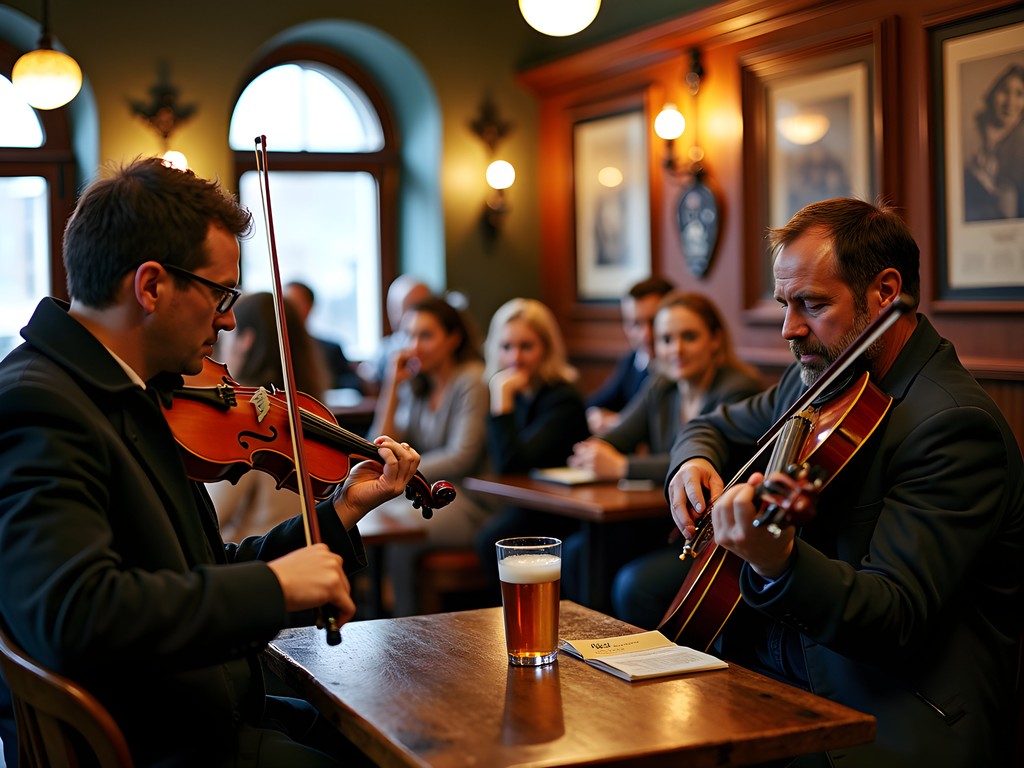
💡 Pro Tips
- Traditional music sessions typically start around 9pm, but arrive by 8:30pm for the best seats
- Weeknight sessions are often less crowded and more authentic than weekend performances
- Many pubs don't mind if you bring in outside food – grab an affordable sandwich to enjoy with your one necessary drink purchase
Affordable Eats: Culinary Dublin Without the Price Tag
Dublin's food scene has evolved dramatically since my first visit a decade ago, but finding affordable options still requires strategic navigation. The city's food markets provide excellent value and local flavor. My favorite is the Temple Bar Food Market (Saturdays, 10am-4:30pm) where €10-15 buys a substantial lunch from vendors selling everything from Irish farmhouse cheeses to international street food. I particularly recommend the oyster stall where six Carlingford oysters with brown bread and a squeeze of lemon costs around €10 – a fraction of restaurant prices.
For quick, affordable meals, Dublin's deli counters offer surprising value. Fallon & Byrne's basement food hall on Exchequer Street has an excellent deli where you can assemble a picnic of Irish cheeses, crusty bread, and charcuterie for under €15. The nearby Dunnes Stores also has a surprisingly good food hall with ready-to-eat options.
Irish breakfast deserves special mention as both cultural experience and budget strategy. A full Irish breakfast at traditional cafés like Gerry's Coffee Shop on Montague Street costs around €8-9 and provides enough sustenance to power through until dinner. The combination of eggs, bacon, sausage, black and white pudding, mushrooms, tomato, and toast is both delicious and economical.
For dinner, early bird menus offer significant savings at restaurants that would otherwise strain a budget. The Winding Stair overlooking the Ha'penny Bridge offers a pre-theater menu (5-6:30pm) featuring modern Irish cuisine for €29.95 for three courses – about half the regular dinner price. I enjoyed their smoked fish plate and remarkable Irish lamb while watching sunset over the Liffey.
Leo Burdock's fish and chips (€8-12 depending on fish choice) has served Dubliners since 1913 and provides a filling, authentic meal at a reasonable price. Their cod and chips wrapped in paper makes for a perfect portable meal to enjoy along the river or in a park.
I always travel with my insulated water bottle which saves money on beverages and keeps tea hot during chilly Dublin mornings. Most cafés will happily fill it with hot water if you have your own tea bags.

💡 Pro Tips
- Ask for 'tap water' specifically in restaurants – otherwise, you might receive bottled water with a charge
- Many museums have cafés with surprisingly reasonable prices and good quality – the National Gallery's café offers lunch specials around €10-12
- The Fumbally near St. Patrick's Cathedral offers excellent coffee and affordable lunch options in a creative atmosphere
Day Trips & Excursions: Beyond the City Center
Dublin's compact center is walkable, but some of the best budget experiences lie just beyond the immediate downtown area, accessible via affordable public transport. The DART (Dublin Area Rapid Transit) train offers scenic coastal routes for the price of a standard ticket (€3.30 for a short journey).
Howth, a 30-minute DART ride from the city center, provides dramatic cliff walks with panoramic views of Dublin Bay. The 6km Cliff Path Loop is well-marked and suitable for moderate fitness levels. I packed a simple picnic and spent a glorious afternoon hiking along the rugged coastline, watching seabirds and enjoying views that rivaled any paid attraction. The village itself offers charming harbor views and excellent seafood (though restaurants here aren't budget options).
On the south side, Dún Laoghaire (pronounced 'Dun Leery') offers a magnificent Victorian harbor with a mile-long East Pier perfect for strolling. The People's Park hosts a Sunday market with artisanal food stalls. My favorite budget activity here is grabbing a famous Teddy's ice cream cone (€3.50) and walking the pier while watching sailing boats in the harbor.
The coastal walk from Greystones to Bray (or vice versa) follows a stunning cliff path with views across the Irish Sea. Take the DART to either endpoint and walk the 7km route one-way, returning by train. This was my Sunday morning activity before heading to Leopardstown Racecourse, and the fresh sea air provided the perfect preparation for an afternoon of studying form guides.
For literary enthusiasts, the James Joyce Tower and Museum in Sandycove (featured in the opening of Ulysses) is free to enter. The Martello tower houses Joyce memorabilia and offers spectacular views from the roof. Nearby Sandycove Beach is where brave locals swim year-round at the famous Forty Foot swimming spot.
The National Botanic Gardens in Glasnevin (3km from city center, accessible by Dublin Bus for €2-3) offers 19.5 hectares of landscaped gardens and impressive Victorian glasshouses without an admission fee. I spent a tranquil morning photographing the Palm House and alpine yard with my compact camera – perfect for capturing both architectural details and botanical specimens.
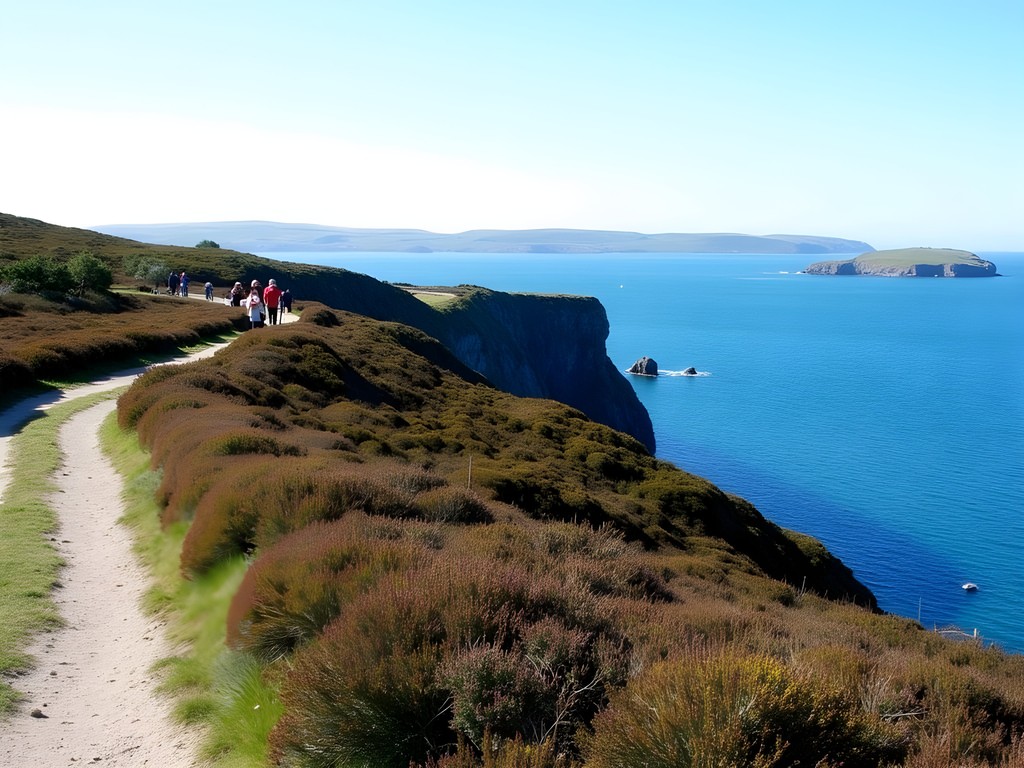
💡 Pro Tips
- Buy a Leap Visitor Card for unlimited public transport – a 72-hour card costs €19.50 and covers buses, DART, and trams
- The DART runs along some of the most scenic coastline in Ireland – sit on the left side heading north or right side heading south for the best sea views
- Many Dublin Bus routes operate as unofficial sightseeing tours – routes 14, 15, and 16 pass many major attractions for the standard fare
Final Thoughts
Dublin reveals its true character to those willing to look beyond the tourist facades and expensive attractions. As both a record collector and racing enthusiast, I've learned that the most authentic experiences often come with the smallest price tags – whether it's discovering a rare Irish folk album in a dusty bin or witnessing world-class musicians perform in a neighborhood pub. The city rewards curious travelers who approach it with an analytical eye for value and a genuine interest in its layered history. My weekend in Dublin proved once again that budget constraints often lead to more meaningful connections with a destination. Next time you're considering a European city break, don't overlook Dublin based on its expensive reputation – with strategic planning and these insider tips, Ireland's capital offers cultural richness that belies its affordable price tag. I'll be back next racing season, ready to discover more hidden corners of this literary, musical, and historical treasure trove.
✨ Key Takeaways
- Most of Dublin's national museums and galleries offer free admission, providing world-class cultural experiences without spending a euro
- Traditional music sessions in pubs like O'Donoghue's and The Cobblestone offer authentic Irish culture for the price of a single drink
- The DART train system provides access to stunning coastal walks and charming villages just outside the city center for minimal cost
📋 Practical Information
Best Time to Visit
September-October (fall)
Budget Estimate
€50-100 per day including accommodation
Recommended Duration
2-3 days
Difficulty Level
Easy

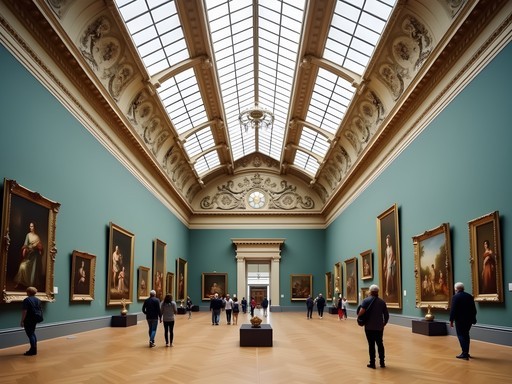
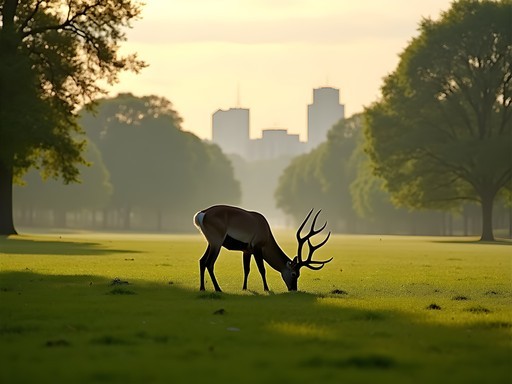






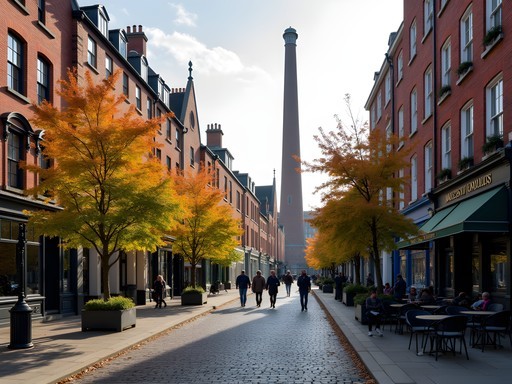
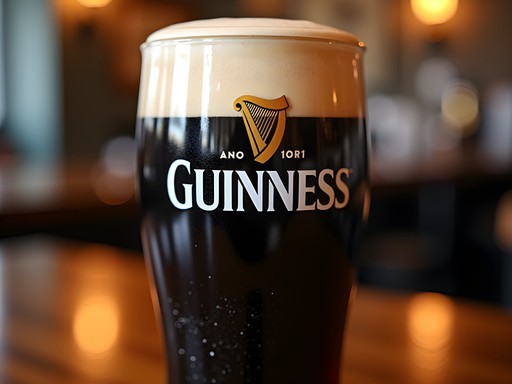
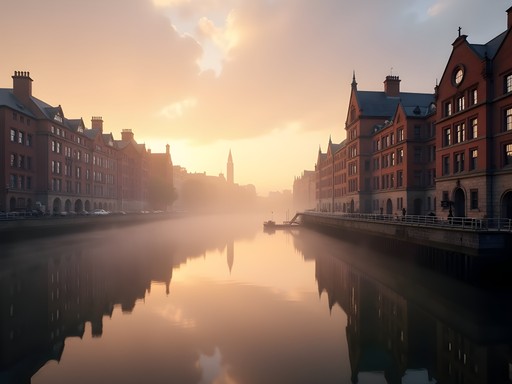
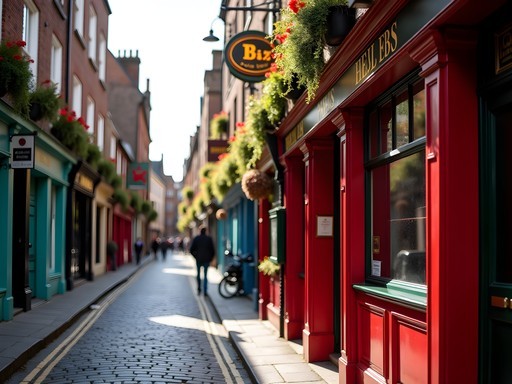


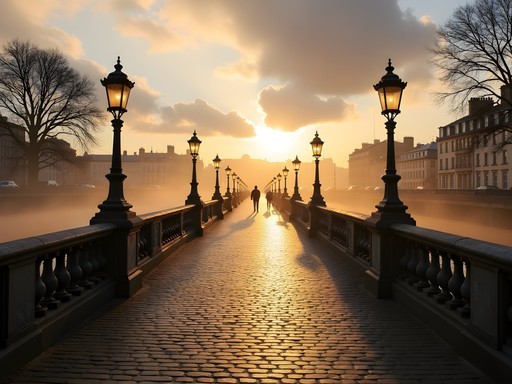
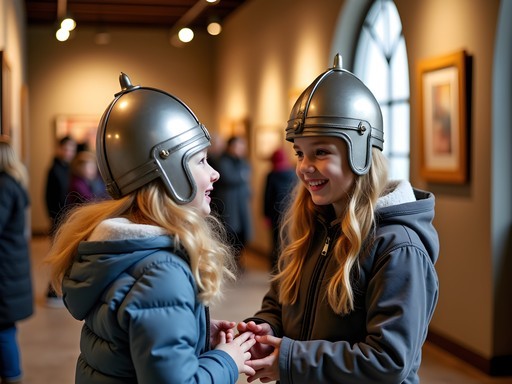
Comments
escapeadventurer
Great post! Another tip: the DART train to Howth for the cliff walk is super affordable (about €3.50 round trip) and one of the best day trips from Dublin. Pack a rain jacket though - learned that one the hard way!
Emily Daniels
That's an excellent addition! Howth is stunning and definitely budget-friendly. I'm planning a follow-up post on affordable day trips from Dublin - would you mind if I include your suggestion?
escapeadventurer
Please do! Happy to help fellow budget travelers discover that gem.
happyway
The St. Stephen's Green suggestion is perfect! We packed a picnic lunch and people-watched for hours. Also discovered that many of the pubs in the Portobello area have free traditional music sessions on weeknights - much less crowded than Temple Bar and more authentic. Dublin was way more budget-friendly than I expected!
islandlegend
Just got back from Dublin and did the free Sandeman's walking tour - amazing value! Our guide Conor was hilarious and knew everything about the city's history. They work for tips but even giving €10-15 makes it way cheaper than paid tours. The Trinity College grounds are free to walk around too, just the Book of Kells exhibit costs money.
blueexplorer4712
Thanks for the tip about Trinity College! Was wondering if the whole place was ticketed or just the Book of Kells.
Savannah Walker
Emily, this is gold! I just returned from Dublin last month and wish I'd had this guide. The Phoenix Park tip is spot-on - I rented a bike and spent a whole day exploring, even spotted the wild deer! For anyone heading there, I'd add that the Little Museum of Dublin has free entry on the first Sunday of each month (book online in advance). Also, for budget eats, the Temple Bar Food Market on Saturdays is amazing for sampling local food without the Temple Bar price tags. I tracked all my Dublin expenses in my travel budget app and was surprised how affordable it was with some planning.
hikinglegend
Love the vinyl records analogy! So true about Dublin.
islandexplorer
Anyone tried those free lunchtime concerts at the National Concert Hall mentioned in the post? Worth planning around?
escapeadventurer
Absolutely! Caught a string quartet there last spring - world-class music in a gorgeous venue, and completely free. Just get there early as it fills up quickly with locals who know the secret!
Jennifer Thomas
This post brought back so many memories! I visited Dublin last year on a super tight budget and discovered most of these gems. The free walking tours were my absolute favorite - I did the literary one that took us through all the spots connected to Joyce, Yeats and Wilde. Our guide was this incredible Dublin native who could recite poetry from memory at each location. Also, don't miss the Chester Beatty Library - it's criminally underrated and completely free. I spent almost half a day exploring their manuscript collection!
blueexplorer4712
Great post! Which free museum would you recommend if I only have time for one? Going to Dublin next month but on a tight schedule!
Emily Daniels
Thanks for asking! If you only have time for one, the National Gallery is my top pick. The Caravaggio alone is worth the visit, and it's completely free!
happyway
I'd second the National Gallery! Spent hours there last summer and didn't spend a penny.
adventureninja
Anyone know if these museums are still free on the first Wednesday? Planning my days in Dublin and want to maximize the freebies!
freeadventurer
Yep, still free on first Wednesdays! But they get super crowded so go early. IMMA (modern art museum) is worth hitting on those days since it normally has an entry fee.
Fatima Sims
Emily, this is exactly the kind of guide I wish I had before my first Dublin trip! I ended up discovering most of these gems by accident. The Phoenix Park deer watching was such a magical moment - I went at dawn and had the whole place practically to myself. One addition I'd make is the free lunchtime concerts at the National Concert Hall on Mondays. I stumbled upon a traditional Irish music session there that blew me away. For budget accommodation, I stayed at a lovely little place in Stoneybatter, which is a bit away from Temple Bar madness but has great local pubs where I spent evenings chatting with Dubliners rather than tourists. I used my pocket guide to find these neighborhoods - so worth exploring beyond the center!
adventureninja
Thanks for the Stoneybatter tip! Any specific hostels or budget places you'd recommend there?
Fatima Sims
I stayed at an Airbnb, but I heard good things about Generator Hostel which is nearby. The Cobblestone pub in that area has amazing free trad music sessions too!
Venture X
Premium card with 2X miles, $300 travel credit, Priority Pass